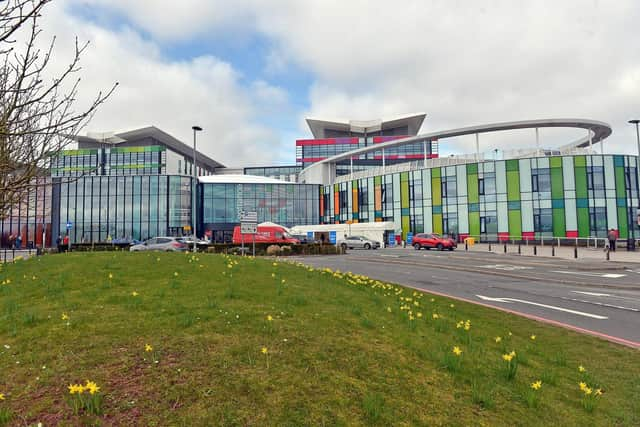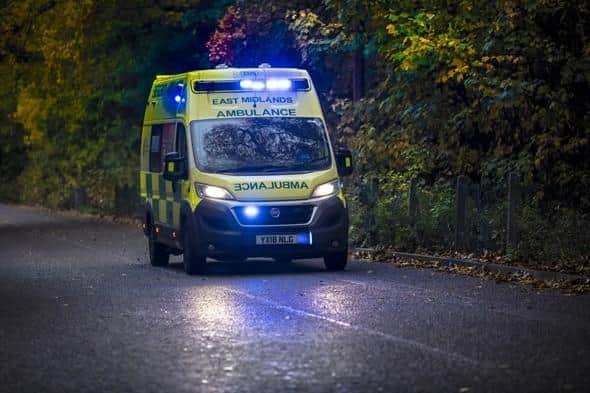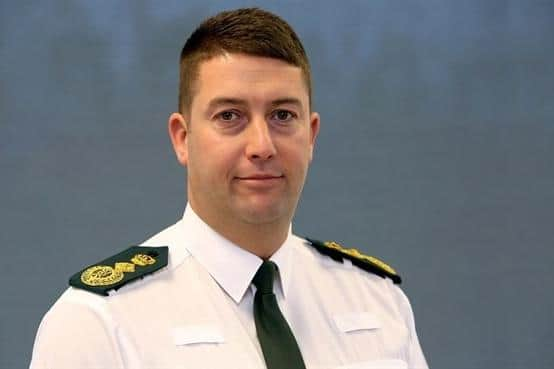NHS pressures: How Sherwood Forest Hospitals NHS Trust is performing
and live on Freeview channel 276
NHS figures show performance has deteriorated across England during the panedmic – patients are now waiting longer in A&E departments, for routine cancer treatment and for ambulances.
But how did these services look before the pandemic?
We have taken a look at how performance at Sherwood Forest Hospitals NHS Trust – which runs Mansfield Community, Sutton’s King’s Mill and Newark hospitals – compares with three years ago.
Advertisement
Hide AdAdvertisement
Hide Ad

Waiting Lists
A record 6.6 million people were waiting for routine, consultant-led hospital treatment in England in May, NHS England figures show, including 42,571 at SFH, up from 37,358 last year and 26,857 in May 2019, before the pandemic.
NHS guidance says trusts should aim for 92 per cent of patients to be seen within 18 weeks, but this target has not been met nationally since 2016.
In May, just 64 per cent of patients who started treatment had been on the waiting list for less than 18 weeks, while more than 300,000 people, 5 per cent, started treatment after waiting at least a year.


At SFH, 73 per cent of the patients who began treatment in May had been waiting up to 18 weeks, down from 91 per cent before the pandemic.
Advertisement
Hide AdAdvertisement
Hide AdIn February, then Health Secretary Sajid Javid set out the NHS post-Covid elective recovery plan.
He promised no patient will wait more than two years for treatment by July, but the Department for Health and Social Care admitted recently this target has not been met.
Sarah Scobie, Nuffield Health Trust deputy director of research, said: “Staffing shortages, ongoing waves of Covid-19 demand, and backlogs of postponed operations and appointments are having a ripple effect throughout the system and impacting people’s care.”


A&E
NHS guidance states 95 per cent of patients attending A&E should be admitted, transferred or discharged within four hours.
Advertisement
Hide AdAdvertisement
Hide AdBut NHS Digital figures show this target has not been met nationally since 2013, and in May, just 59 per cent of patients across England were seen within four hours, down from 76 per cent in the same month last year and 79 per cent in 2019.
At SFH, just 75 per cent of 10,186 A&E patients were dealt with within four hours, down from 90 per cent in 2019, before the pandemic.


Cancer Treatment
The pandemic also had a significant impact on cancer services across England, with Covid-related disruption leaving many patients in limbo.
NHS guidance says 85 per cent of cancer patients with an urgent GP referral should begin treatment within 62 days.
Advertisement
Hide AdAdvertisement
Hide AdFurther NHS England figures show 62 people referred for cancer treatment from their GP were treated within 62 days at SFH.
It meant just 58 per cent of 106 people were seen within the NHS-guided time limit, down from 78 per cent in May 2019.
Nationally, 61 per cent of people received treatment within 62 days in May, down from 78 per cent in 2019 and well below the 85 per cent target, which has not been met since December 2015.
What SFH has said
Rachel Eddie, SFH chief operating officer, said: “Demand for NHS services remains exceptionally high across the country.
Advertisement
Hide AdAdvertisement
Hide Ad“We are working closely with our health and social care partners to ensure patients can continue to access the treatment they need as quickly as possible.
“Thank you to patients awaiting treatment for their understanding while our colleagues continue working to reduce waiting lists.
“Before visiting A&E, we’re asking people to consider whether it is a genuine emergency, as it’s often not the best place for their needs.
“If you need urgent medical attention when it’s not an emergency, please visit NHS111 online or call 111. Alternatively, please speak to your pharmacy or check nhs.uk for advice.”
Advertisement
Hide AdAdvertisement
Hide AdAmbulance Response Times
Ambulance trusts have also struggled with growing pressures as a result of the pandemic.
Nationally, the average response time for major emergencies has more than doubled in the last three years, sitting at 51 minutes and 38 seconds in June, NHS England figures show.
The figures show response times in the East Midlands have also risen significantly throughout the pandemic.
In June 2019, teams at East Midlands Ambulance Service NHS Trust responded to major emergencies in 28 minutes and 13 seconds.
Advertisement
Hide AdAdvertisement
Hide AdThis rose to one hour, 11 minutes and 51 seconds in June 2022.
What EMAS has said
In a report to the latest EMAS board meeting, Richard Henderson, EMAS chief executive, said: “We are still experiencing significant delays at hospitals and general pressures in the health systems which impact on our resourcing and ability to consistently provide a timely and safe service to patients.
“In June, we lost 16,000 resource hours because our crews were delayed waiting to hand patients over at hospital. This is the equivalent of the total amount of double crewed ambulance hours we have available in the Northampton division – losing these hours was equivalent to closing one of our divisions for the month.
“I remain concerned about the impact handover delays are having on patients we are unable to get to, because our resources are waiting long periods at hospital, and our staff, such as those taking 999 calls, who are unable to send a response as quickly as they know it is needed, and our crews, who are working under significant pressure to look after our patients.”
Advertisement
Hide AdAdvertisement
Hide AdWhat the Government has said
A DHSC spokesman said it is growing the workforce and has commissioned NHS England to develop a long-term workforce plan.
He said: “NHS staff have been working hard to bust the Covid backlogs and have treated more than 15m patients in the last year.
“Our community diagnostic centres have delivered more than 1.5m additional checks since July 2021 and the number of people waiting more than two years for treatment has dropped by more than 80 per cent since February."